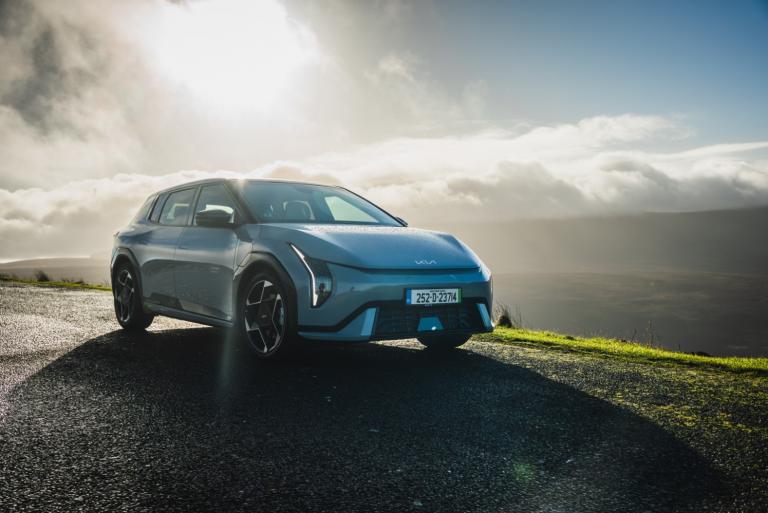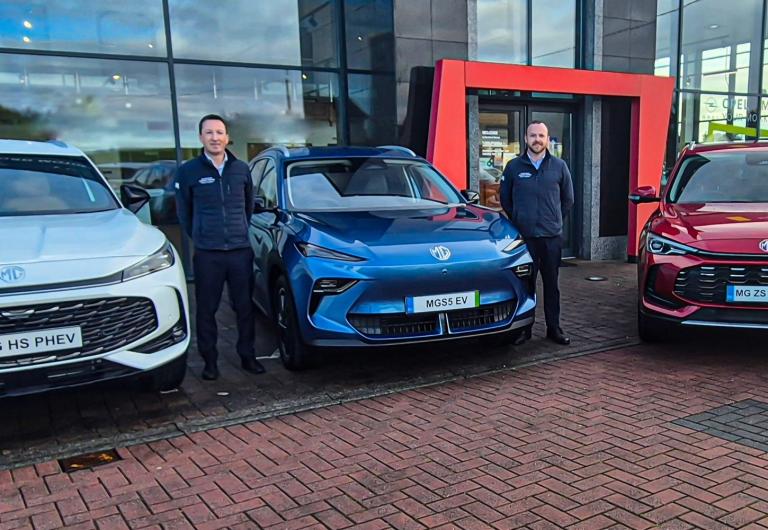Toyota throws a real curve ball with the C-HR
Published on 29 January, 2017
This is the most radical thing the automaker has done for a long, long time.
Overview
Just when we thought we had all the curves and angles we'd ever want on our cars, it now seems the Extravaganza of Shapes is only beginning.
Take this new crossover from Toyota: an intricate mix of sharp lines, smooths turns, curves and crevices. And they tell me they have lots more of such radical ilk on the way.
This latest challenger for buyers of the Hyundai Tucson and Nissan Qashqai is called the C-HR (which stands - I kid you not - for Coupé: High Rider).
Well, it's riding high at the moment and 3,000 people are expected to buy one this year. That's a lot of curves and straight lines.
I saw it for the first time at the Geneva Show last year and loved the look of it. I remember saying it was about time Toyota threw off the shackles of conservatism. Now that I've driven it a lot, I'm wondering if it isn't five per cent OTT. Are there too many departure points in its design? I can't make up my mind. One day, I'm loving it; the next, I'm not 100pc sure. But the great thing is you can't ignore it; while you could pass many a previous Toyota without giving them a second look.
This is the most radical thing the automaker has done for a long, long time. And it just goes to show you - traditional considerations such as reliability, etc aside - how much looks matter to prospective buyers of these crossovers.
That applies right across the board because the C-HR (and its rivals) is targeted at young couples, singles, families and those downsizing - a broad canvas.
If the looks are stunning, they are deceptive, too. The car doesn't give the impression it could rival the Qashqai on size because it is compact and low-slung (hence the 'Coupé bit). Yet there is little between them. It's 4.35m long; the Qashqai is 4.38m.
The coupé element carries benefits and drawbacks. Apart from looks, I love the way the rear-door handles are embedded at the top as part of the rising-design flow. Their height made them easy to reach and use, too.
The driving position is slightly, but helpfully, unusual, with the wheel a bit lower and, proportionately, the seat higher. The benefit is you can see your instrument cluster all the time without having to strain eyes or neck.
The cabin was roomier than I recalled, with loads of space out front. But it is not altogether as good at the rear where the coupé's curves and dip in the roof affected the taller of my passengers getting in and out.
Yet you feel you are sitting quite low (the middle seat of three is really small) and the shallow side windows compound that sensation.
And boy was it dark back there? The upholstery in my car was too dull. It was crying out for a splash, or insert, of colour. The impact of the design on the two rear-corner pillars keeps light to a minimum, too, and blotted out more visibility than I'd like. Straight-out rear-hatch vision is fine, but you'll still be glad of the reversing camera in tight parking spots. The boot isn't mega but it is a decent square-and-deep 377 litres.
The front of the cabin is clean-lined and simple: nothing fussy, with the major interface screen in the middle. I liked it a lot.
In terms of driving, I'd have to say it was the smoothest, quietest car of its ilk I have had in a long time. I'm fiercely sensitive to wind, tyre/road and engine noise in cars like this. Just irritable old me, I suppose, but I always argue that quietness reflects investment in time and money to achieve - as well as good build quality and proper tyre choice.
I've no doubt the fact there was a 1.2-litre turbo petrol engine out front helped on that score, too. It was uber quiet. I've heard criticism of it: that it lacks power. I can't honestly say I'd criticise it for that. Yes, I'd have liked more poke (it's 116bhp) but that's petrol-head talk. It is not like it was mad sluggish or anything; and, anyway, what family/couple is looking for 'performance' in a car like this?
However, fuel consumption wasn't great at all. They claim 5.9l/100km. I got 7.5/100km overall and I wasn't pushing it. Not great.
There is a slightly more powerful hybrid (122bhp) version which is far more frugal (3.8/100km claimed) but it is between €2,000/€2,400 more expensive. How long would you be claiming back the difference in fuel and road tax costs?
Are we about to start a petrol v hybrid discussion (there is no diesel, which is unusual because it's so popular with buyers)? Maybe that's for another day; so much depends on what sort of driving you do.
However, you can be sure of one thing: regardless of what's under the bonnet, the rest of your C-HR will certainly be noticed.
FACTS & FIGURES
Toyota C-HR crossover, 1.2 petrol turbo, 135g/km, €280 road tax, 116bhp, 5.9l/100kms, 1,300kg towing.
Prices from €26,895 (Luna), Luna Sport (€29,950), Sol (€30,950).
Standard spec includes: dual/auto air con, Touch 2 (8ins screen), reversing camera, 17ins alloys, front fogs, auto wipers, Safety Sense, adaptive cruise control. Luna Sport adds: heated front seats, 18ins alloys, bi-tone roof, privacy glass. Sol (tested) adds: 'intelligent' park assist' (SIPA), satnav, part leather seats.
Hybrid version (1.8-litre petrol), 86g/km, €180 road tax, 122bhp, 3.8l/100km, 725kg towing. From €29,350.
You May Also Be Interested In
Latest Reviews

Kia EV4 Video Review

CarsIreland Dealership Awards 2025: Celebrating Excellence Across Ireland

Rochford Motors Joins MG Network as New West of Ireland Dealer